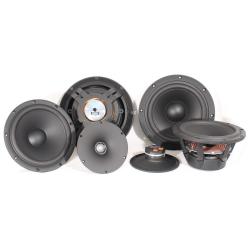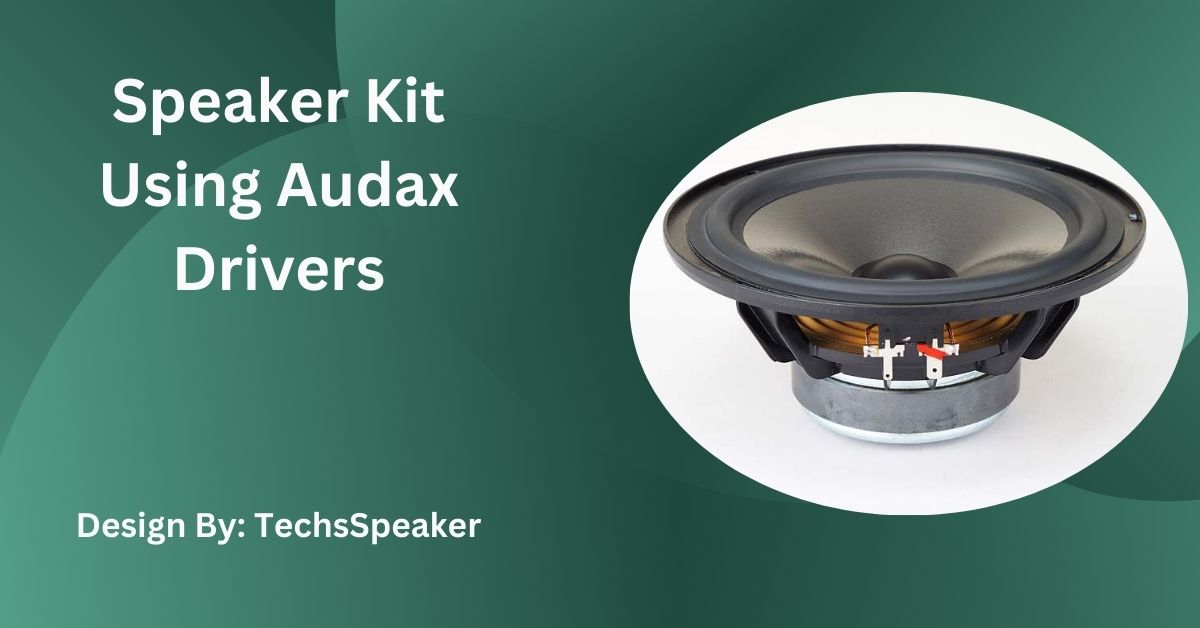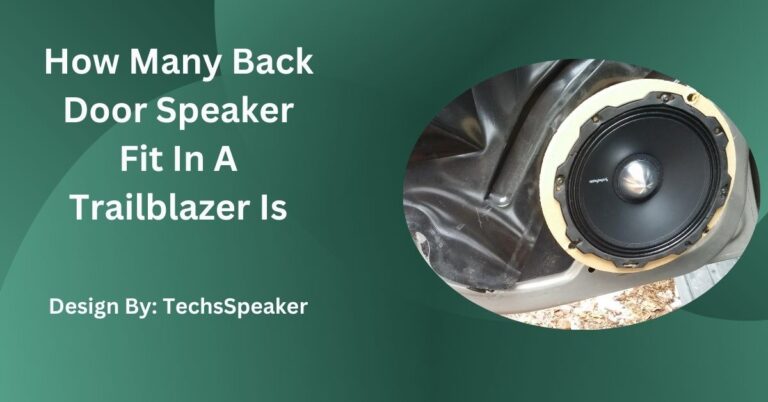Speaker Kit Using Audax Drivers – Step-by-Step Guide!
Audax drivers are renowned for their precision and superior sound quality, making them an excellent choice for DIY speaker kits. Their diverse range and durability enhance the customization and longevity of audio projects.
For audio enthusiasts and DIYers, the thrill of building your own speaker kit is unmatched. Not only does it allow you to customize your audio setup to suit your personal tastes, but it also provides an insightful look into the mechanics of sound reproduction. One name that consistently stands out in the realm of high-quality speaker components is Audax.
Known for their precision and performance, Audax drivers are a favorite among audiophiles looking to craft the perfect sound system. In this guide, we’ll walk you through everything you need to know about using Audax drivers to create a superior speaker kit.
Why Choose Audax Drivers?
Before we jump into the build, let’s explore why Audax drivers are a top choice for many speaker builders. Founded in France, Audax has been at the forefront of loudspeaker technology for decades. They are renowned for their innovation and commitment to quality, ensuring that each driver delivers unparalleled sound clarity and consistency.
Superior Sound Quality
Audax drivers are engineered to offer exceptional sound reproduction across all frequencies. Whether you’re looking for deep, resonant bass or crystal-clear highs, Audax drivers are designed to deliver a full-spectrum audio experience. Their meticulous construction minimizes distortion, allowing you to enjoy your music or movies exactly as they were intended to be heard.
Wide Range of Options
Audax provides a diverse range of drivers, including woofers, midranges, and tweeters, allowing you to tailor your speaker kit to match your specific audio needs. Whether you’re building a compact bookshelf speaker or a large floor-standing model, Audax has the components to make your vision a reality.
Durability and Longevity
Quality craftsmanship means that Audax drivers are built to last. Using robust materials and advanced engineering techniques, these drivers are designed to withstand the rigors of everyday use while maintaining their performance over time. This durability makes them a smart investment for any DIY audio project.
Planning Your Speaker Kit:

The first step in building your speaker kit is careful planning. Consider what type of speaker you wish to create, where it will be used, and what kind of sound you want to achieve. This will guide your selection of drivers and other components.
Determine Speaker Type
Your choice of speaker type—be it a two-way bookshelf or a multi-driver floor-standing unit—will influence your design choices. Bookshelf speakers are great for small spaces and provide excellent sound quality in a compact form, while floor-standing speakers can deliver more power and depth, ideal for larger rooms.
Select Your Audax Drivers
Once you have decided on the speaker type, it’s time to select your drivers. For a basic two-way system, you will need a woofer and a tweeter. For more complex systems, you might include additional midrange drivers or subwoofers to enhance certain frequencies.
- Woofer – Choose a woofer that can handle low frequencies with power and precision. Look for options with sturdy cones and voice coils that can withstand high power levels without distortion.
- Tweeter – A high-quality tweeter is essential for reproducing high-frequency sounds accurately. Audax offers a range of tweeters, from metal dome to soft dome, each providing a unique listening experience.
- Midrange Drivers – If you’re opting for a three-way setup, midrange drivers will manage the critical mid frequencies. These should blend seamlessly with the woofer and tweeter for smooth audio transitions.
Design the Enclosure
The speaker enclosure significantly impacts the sound quality. It needs to be well-designed to minimize vibrations and resonance that can color the sound. You can choose from various designs, such as sealed, ported, or transmission line enclosures, each offering different acoustic properties.
- Sealed Enclosures – Provide tight and accurate bass response but require more power to achieve high output levels.
- Ported Enclosures – Use a vent or port to enhance low-frequency output, making them more efficient than sealed boxes.
- Transmission Line Enclosures – Offer extended bass and very low distortion, but are more complex to design and build.
Also Read: Is Gold Note X-85 Speaker Sold In Pair – Find Out Here!
Building Your Speaker Kit:
With your plan in place, you’re ready to start building. Here are the basic steps to assembling your speaker kit using Audax drivers.
Step 1: Gather Materials and Tools
Ensure you have all the necessary materials and tools before you begin. This includes your selected Audax drivers, wood for the enclosure, screws, sealant, and wiring. Essential tools include a drill, saw, screwdriver, and soldering iron.
Step 2: Cut and Assemble the Enclosure
Using your chosen design, cut the wood panels for your enclosure. Assemble them carefully, ensuring all edges are sealed tightly to prevent air leaks which can affect performance. Sand the edges and apply a finish if desired.
Step 3: Mount the Drivers
Once the enclosure is complete, mount the Audax drivers securely. Ensure that each driver is correctly aligned and that the mounting screws are tight to avoid rattling.
Step 4: Wire the Components
Connect the drivers to the crossover network, which splits the audio signal into separate frequency bands for each driver. Ensure all connections are secure and insulated to prevent short circuits.
Step 5: Test and Tweak
Before closing up your speaker, test it with a range of music to evaluate its performance. Make any necessary adjustments to the crossover or enclosure to refine the sound quality.
FAQs:
1. What makes Audax drivers superior for DIY speaker kits?
Audax drivers offer exceptional sound reproduction across all frequencies and are built with robust materials for durability, making them ideal for DIY enthusiasts aiming for high-quality custom speakers.
2. Which Audax drivers should I choose for a two-way speaker setup?
For a basic two-way system, select a woofer with sturdy cones for low frequencies and a high-quality tweeter, such as those offered by Audax, for accurate high-frequency sound.
3. How do I design an effective speaker enclosure?
Choose from sealed, ported, or transmission line enclosures based on your acoustic needs. Ensure the enclosure is well-designed to minimize vibrations and enhance sound quality.
4. What tools are necessary to build a speaker kit using Audax drivers?
Essential tools include a drill, saw, screwdriver, and soldering iron. You’ll also need materials like wood for the enclosure, screws, sealant, and wiring to assemble your speaker kit.
5. How can I test and adjust my DIY speaker kit for optimal performance?
After assembling, test the speaker with varied music. Evaluate its performance and fine-tune the crossover network or enclosure design as needed to achieve desired sound quality.
Conclusion:
Building your own speaker kit using Audax drivers offers an engaging and rewarding experience for audio enthusiasts. With their superior sound quality, diverse options, and durable construction, Audax drivers allow you to create a custom audio setup that meets your specific needs. By carefully planning your design, selecting the right drivers, and crafting a well-built enclosure, you can enjoy a high-quality sound experience that reflects your personal taste and style.







